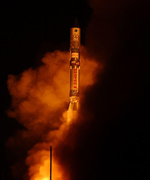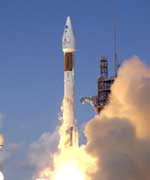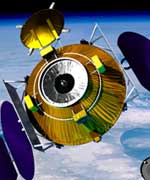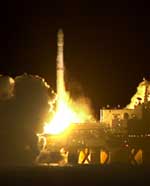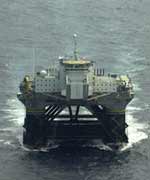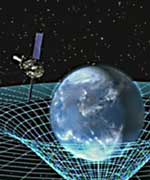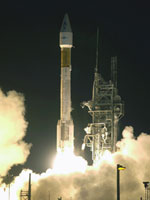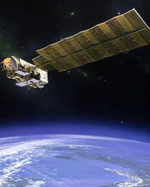Sea Launch Company deployed Loral?s Telstar 18 communications satellite into orbit tonight from its ocean-based platform on the Equator. Early data indicate all systems aboard the spacecraft are in excellent condition.
The Sea Launch Zenit-3SL rocket lifted off at 8:59 pm PDT (3:59 GMT , June 29), as scheduled, from the Odyssey Launch Platform, positioned at 154 degrees West Longitude. On its way to a final orbital position at 138 degrees East Longitude, the spacecraft was separated into a reduced apogee orbit. A ground station in Perth, Australia, acquired the spacecraft?s first signal, shortly after spacecraft separation.
After the completion of the mission, Jim Maser, president and general manager of Sea Launch, said, ?We are still assessing the data and we are optimistic the spacecraft will achieve its specified lifespan on orbit. We are supporting our Loral customer in this assessment. We will issue additional information as it becomes available.?
Built by Space Systems/Loral and operated by Loral Skynet ? both subsidiaries of Loral Space & Communications ? the high-powered 1300-model spacecraft carries 54 active transponders, 16 Ku-band transponders and 38 C-band transponders. Once operational in the next few weeks, the Ku-band will reach China, India, Taiwan and Hong Kong, while the C-band capacity will cover Asia, Australia, New Zealand, the Pacific islands and Hawaii. The satellite will host cable programming, direct-to-home broadcasting, Internet, VSAT and IP-based two-way services within Asia while providing an inter-connect to the United States.
Sea Launch Company, LLC, headquartered in Long Beach, Calif., and marketed through Boeing Launch Services (www.boeing.com/launch), is the world?s most reliable commercial heavy-lift launch services provider. This multinational partnership offers the most direct and cost-effective route to geostationary orbit. With the advantage of a launch site on the Equator, the reliable Zenit-3SL rocket can lift a heavier spacecraft mass or provide longer life on orbit, offering best value plus schedule assurance. For additional information and images of this mission, please visit the Sea Launch website at: www.sea-launch.com
Original Source: Boeing News Release

